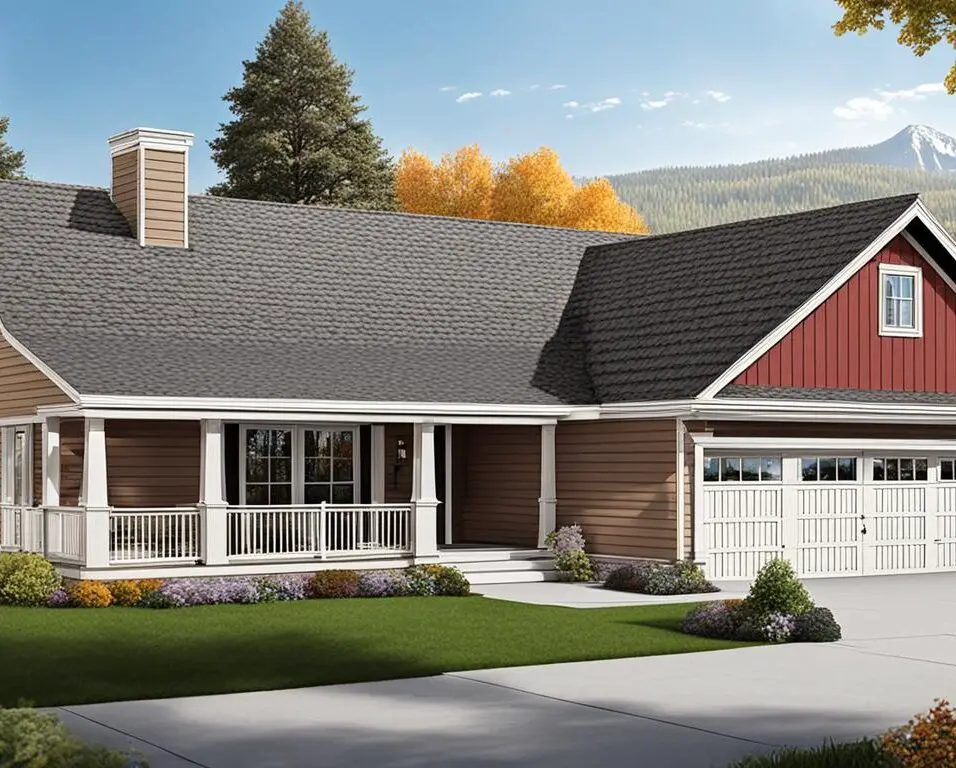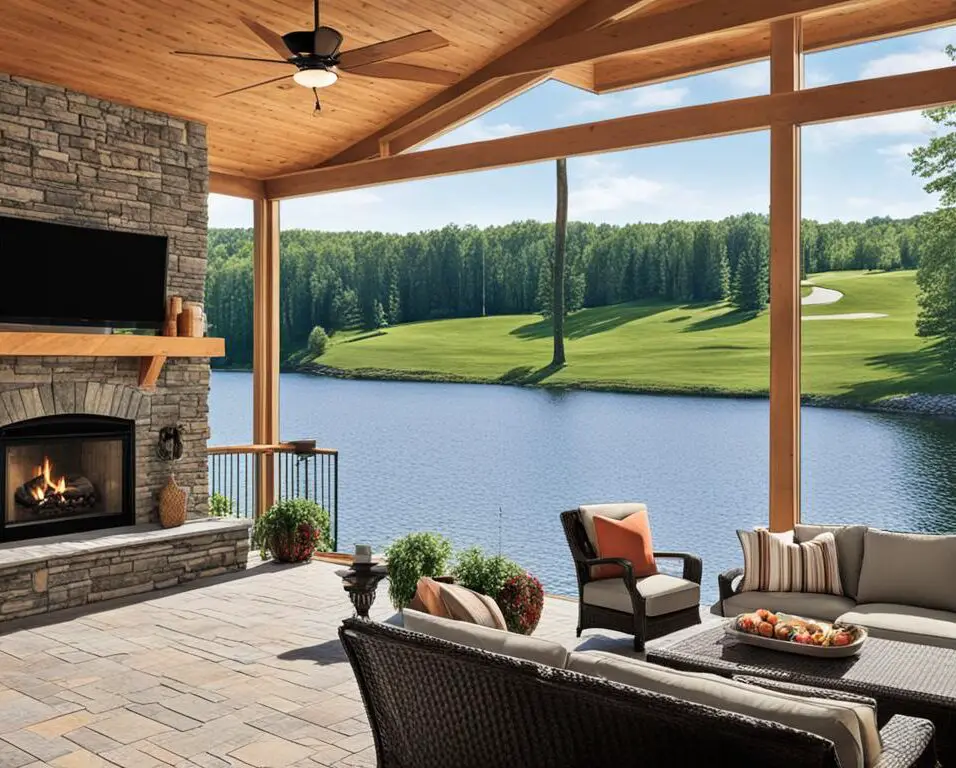How To Install Shower Plumbing
Introduction
How To Install Shower Plumbing: Installing shower plumbing can be a daunting task for someone who has never done it before. This guide will provide step-by-step instructions on how to install shower plumbing. Before beginning the installation process, it is important to gather all necessary tools and materials. This may include a pipe cutter, pipe wrench, plumber’s tape, soldering torch, solder, flux, PVC primer and cement, and a level. It is also crucial to have the correct type and size of pipes and fittings for the specific shower plumbing setup.
The first step in the installation process is to plan out the plumbing layout. This involves determining the location of the shower drain, water supply lines, and any additional plumbing fixtures such as a showerhead or body sprays. It is important to ensure that the layout complies with local building codes and regulations.
Next step, the shower drain needs to be installed. This involves cutting a hole in the subfloor and connecting the drain to the existing plumbing system. It is crucial to properly align and secure the drain to prevent leaks and ensure proper drainage.

What Do I Need To Install Shower Plumbing?
Required Materials for this how to change shower fixtures project
- Copper fittings.
- New valve.
- Pipe joint tape.
- Plastic access panel.
- Renovation cover plate.
- Shutoff valves.
To install shower plumbing, there are several tools and materials that you will need to gather beforehand. Here is a list of the essentials:
Pipe Cutter
It is important to have a clean, straight cut for proper fitting.
Pipe Wrench
A pipe wrench is necessary for tightening and loosening pipe fittings. It provides a secure grip on the pipes and fittings.
Plumber’s Tape
It prevents leaks and ensures a secure connection.
Soldering Torch, Solder, and Flux
If you are working with copper pipes, you will need a soldering torch, solder, and flux to join the pipes and fittings together. This creates a strong, durable connection.
PVC Primer and Cement
If you are working with PVC pipes, you will need PVC primer and cement to join the pipes and fittings. The primer cleans the surface, and the cement creates a chemical bond for a secure connection.
Level
It helps to prevent any issues with water flow or drainage.
Pipes and Fitting’s
You will need the appropriate size and type of pipes and fittings for your shower plumbing setup. This may include copper pipes, PVC pipes, elbows, tees, and connectors.
Shower Drain
Make sure to choose a drain that is compatible with your plumbing system and meets local building codes.
Water Supply Lines
You will need water supply lines to bring hot and cold water to your shower. These can be copper or flexible PEX pipes.
Shower Valve
The shower valve controls the water flow and temperature. Choose a valve that suits your preferences and meets your plumbing system requirements.
Remember to follow local building codes and regulations when gathering the materials for your shower plumbing installation. It is also advisable to consult a professional plumber or reference a comprehensive guide to ensure a successful and safe installation process.
How Is A Shower Plumbed In?
The water supply for a shower arrives via two pipes: hot and cold. In construction that is less than 30 years old, these pipes are usually copper. The pipes connect to a shower valve that controls the temperature and flow of water to the shower head.
Installing the Shower Drain
The first step is to install the shower drain. This involves cutting a hole in the subfloor and connecting the drain to the existing plumbing system. Proper alignment and secure installation are crucial to prevent leaks and ensure effective drainage.
Water Supply Lines
These are the pipes that bring hot and cold water to the shower. Proper measurement, cutting, and fitting of the pipes are important to ensure a secure and leak-free connection.
Shower Valve
The shower valve controls the water flow and temperature. Follow the manufacturer’s instructions for proper installation and ensure a watertight seal.
Additional Fixtures
It is important to test for leaks and ensure that all connections are secure.
Testing and Finishing
Turn on the water supply and check for any water seepage or dripping.
How do I put in a shower? What are the steps?
After getting the area ready, here’s how to put in your shower:
- Make holes for the pilot.
- Get the fixture holes ready.
- Place the unit where you want it.
- Seal the base and corners with caulk.
- Put the shower doors in place.
- Put the shower pan in place.
There are several steps that need to be taken to make sure that the shower is installed correctly and works. The main steps are broken down below:
Getting ready
Get all of the tools and materials you’ll need before you start the work. Some of the things that might be in this are a drill, a level, a measuring tape, a pipe cutter, a wrench, plumber’s tape, and the shower kit or its parts.
Find and Write Down Sizes
Find the wall where you want to put the shower cubicle and mark it. Make sure the marks are straight and level with a level. This will be used as a guide for setting up.
Getting ready for plumbing
Find out where the drain and water supply lines are. If you need to, move or change the plumbing to make it fit the shower enclosure. Make sure that the plumbing follows the rules and codes for building in your area.
Put the shower pan in place.
Put the shower pan or base in place first. To do a good installation, follow the manufacturer’s instructions. Usually, this means putting down a layer of mortar or glue to hold the base to the floor. Make sure the base is flat and in the right place.
Link the Drain
Follow the manufacturer’s steps to put the drain assembly together. Connect it to the pipes and make sure the seal doesn’t let water in. Run water through the drain to check for leaks.
Put up the wall coverings.
Put the tiles or wall panels on the walls of the shower area. To do a good installation, follow the manufacturer’s instructions. Make sure the walls are straight, level, and properly sealed. To keep the pieces in place, use the right glue or fasteners.
Put the shower fixtures in place.
Put in the shower hardware, like the showerhead, controls, and any other extras. To do a good installation, follow the manufacturer’s instructions. Check for leaks and make sure that all links are safe.
Finish and seal
Along the sides of the shower enclosure, including the seams between the wall panels and the base, use the right sealant or caulk. This will keep water out and make sure the seal is sealed. Get rid of any extra caulk or sealer.
Check the Shower
Start the water flow and make sure the shower can control the warmth and flow of water. Look for drips or leaks. Adjust or fix anything that needs to be fixed.
Get Clean
Throw away any trash or mess that was made during the installation. Make sure the area around the shower is clean and ready to be used.

Is A Shower A Plumbing System?
They would have to put in a plumbing system and plumbing fixtures for a building, home, or business to have running water. Each plumbing fixture is made for a different reason, but they are all made to do the same thing. Taps, sinks, bathtubs, showers, and toilets are some of the most popular plumbing fixtures.
You can think of a shower as part of the water system. The lines, fixtures, and other parts that bring water into a building and take waste water out are called its plumbing system. The shower is an important part of this system because it is used for cleaning.
There are many plumbing parts that make up a shower, like pipes, valves, and drains. The pipes bring hot and cold water from the main water source to the shower. The valves control how fast the water flows and how hot or cold it is. The drain takes the waste water away and sends it to the septic tank or sewage system.
Because of the different types of shower installations, the water system for a shower can be very complicated. It could use a mix of copper or PVC lines, fittings, and connections. These parts make sure that the water flows properly, stop leaks, and make sure that the showering experience is safe and useful.
It is important to follow building codes and rules when adding a shower to make sure the plumbing system meets the safety and functionality standards. This includes installing lines the right way, making sure they are the right size, putting valves and fixtures in the right place, and making sure there is good drainage.
How Does Plumbing Work In A Shower?
Cold water goes straight to the cold pipe, while hot water makes a stop in the water heater first. Water from both pipes meets at the shower valve, which mixes it together and sends it to the shower head or tub spout. Depending on your shower configuration, you will need different types of valves and hardware.
Plumbing in a shower works by bringing water from the main water supply, controlling its flow and temperature, and efficiently draining the wastewater. Here is a breakdown of how plumbing works in a shower:
Water Supply
The plumbing system starts with the water supply. Cold water is typically supplied directly from the main water line, while hot water is usually supplied from a water heater. The water supply lines are connected to the shower valve.
Shower Valve
The shower valve is the control center for the water flow and temperature. It may consist of separate controls for hot and cold water or a single lever that adjusts both. When the valve is turned on, it allows water to flow through the showerhead or other fixtures.
Showerhead and Fixtures
The showerhead is the main fixture that sprays water for bathing.
Drainage System
As water is used in the shower, it needs to be drained efficiently. The shower drain is responsible for collecting and removing the wastewater.
Pipe Materials
The plumbing system in a shower can be made of various materials, depending on the building codes and personal preferences. Common materials include copper pipes, PEX (cross-linked polyethylene) pipes, or PVC (polyvinyl chloride) pipes. Overall, the plumbing system in a shower works by providing a controlled flow of water from the main supply, controlling temperature, and efficiently draining wastewater.
What Tools And Materials Are Required For Shower Plumbing Installation?
When it comes to shower plumbing installation, there are several tools and materials that are essential for the job. Here is a list of the most common tools and materials required:
Pipe Cutter
A pipe cutter is necessary to cut the pipes to the desired length. It ensures a clean, precise cut.
Pipe Wrench
A pipe wrench is used to tighten and loosen pipe fittings. It provides a strong grip and leverage for tightening or loosening connections.
Plumber’s Tape
Also known as Teflon tape, plumber’s tape is used to create a watertight seal on threaded pipe connections. It prevents leaks and ensures a secure connection.
Soldering Torch, Solder, and Flux
If you are working with copper pipes, a soldering torch, solder, and flux are required for soldering the pipes and fittings together. This creates a strong, durable connection.
PVC Primer and Cement
If you are using PVC pipes, PVC primer and cement are necessary for joining the pipes and fittings. The primer cleans the surfaces, and the cement creates a chemical bond for a secure connection.
Adjustable Wrench
An adjustable wrench is needed for tightening or loosening nuts and bolts, especially those used for the showerhead and other fixtures.
Plunger
A plunger is essential for unclogging drains in case of any blockages.
Pliers
Pliers are useful for gripping and turning nuts, bolts, and fittings during installation.
Pipes and Fittings
You will need the appropriate size and type of pipes and fittings for your shower plumbing installation. This may include copper pipes, PVC pipes, elbows, tees, couplings, and connectors.
Shower Drain
A shower drain is necessary to remove wastewater from the shower. Make sure to choose a drain that is compatible with your plumbing system and meets local building codes.
Shower Valve
The shower valve controls the water flow and temperature. Choose a valve that suits your preferences and meets your plumbing system requirements.
How Do I Ensure Proper Water Pressure For The Shower?
Ensuring proper water pressure for the shower is important for a satisfying and functional showering experience. Here are some steps you can take to ensure adequate water pressure:
Check the Main Water Supply
Start by checking the main water supply coming into your house. Make sure that the water supply valve is fully open.
Check Pressure Regulator
The recommended pressure for a residential property is typically between 40-60 psi (pounds per square inch). If the pressure regulator is not functioning correctly, you may need to have it adjusted or replaced.
Clear Clogs and Blockages
Low water pressure can be caused by clogs or blockages in the plumbing system. Check for any clogged or partially closed valves, faucets, or showerheads. Clean or replace any fixtures that are causing the restriction.
Remove Flow Restrictors
Many showerheads and faucets are equipped with flow restrictors that limit water flow to conserve water. These restrictors can significantly reduce water pressure. Check if your showerhead or faucet has a flow restrictor and remove it if necessary. However, be aware that removing a flow restrictor may increase water consumption.
Clean or Replace Showerhead
Over time, mineral deposits and debris can accumulate in the showerhead, restricting water flow and causing low water pressure. Remove the showerhead and clean it thoroughly, removing any build-up. If cleaning doesn’t improve the water pressure, consider replacing the showerhead with a new one designed for higher pressure.
Check Plumbing System
If you have followed the above steps and still experience low water pressure, there may be an issue with your plumbing system. By following these steps, you can identify and resolve common causes of low water pressure and ensure a satisfying shower experience with proper water pressure.
What Should I Do If I Encounter Difficulties During Shower Plumbing Installation?
During shower plumbing installation, it is not uncommon to encounter difficulties or challenges. Here are some steps you can take to address these issues:
Assess the Situation
When you encounter difficulties, take a step back and assess the situation. Determine the specific issue or challenge you are facing. It could be a measurement error, a leaking joint, a stubborn fitting, or any other problem.
Consult Installation Instructions
Refer to the installation instructions provided with the shower kit or components you are using. Check if there are specific guidelines or troubleshooting steps for the issue you are facing. The instructions may provide valuable insights or solutions to common problems.
Research and Seek Guidance
If the installation instructions do not provide a solution, do some research online or consult relevant resources such as plumbing guides or forums. There may be others who have encountered similar difficulties and have shared their experiences and solutions.
Consult a Professional
They have the expertise and experience to troubleshoot and address plumbing problems effectively. They can offer guidance, provide solutions, or even assist in completing the installation if necessary.
Take a Break and Revisit
If you find yourself becoming frustrated or overwhelmed, take a break. Step away from the project for a while and return with a fresh perspective. Sometimes, a break can provide clarity and help you approach the problem with a new mindset.
Ask for Help
Don’t hesitate to ask for help from family members, friends, or neighbors who may have experience with plumbing installations. They may be able to offer advice, lend a helping hand, or provide additional tools or resources.
Adapt and Modify
This could involve adjusting the layout, changing the plumbing materials, or exploring alternative solutions. Be flexible and open to making adjustments as needed.
Remember, shower plumbing installation can be complex, and difficulties may arise. Stay patient, persistent, and willing to seek assistance when needed. With the right approach and resources, you can overcome challenges and successfully complete the installation.

Conclusion
Installing shower plumbing may seem like a daunting task, but with the right tools, knowledge, and patience, it can be accomplished by most homeowners. By following the step-by-step instructions outlined in this guide, you can successfully install your own shower plumbing system.
Proper planning is essential before beginning the installation process. This includes determining the layout, location of the shower drain, and water supply lines. It is important to ensure compliance with local building codes and regulations.
The installation process involves connecting the shower drain, installing the water supply lines, connecting the shower valve, and installing the showerhead and any additional fixtures. Each step requires attention to detail, proper measurement, and secure connections to prevent leaks and ensure optimal functionality. Testing the system for leaks is a crucial final step. Turn on the water supply and check all connections for any signs of leakage. It is also important to test the water flow and temperature control to ensure everything is working properly.








